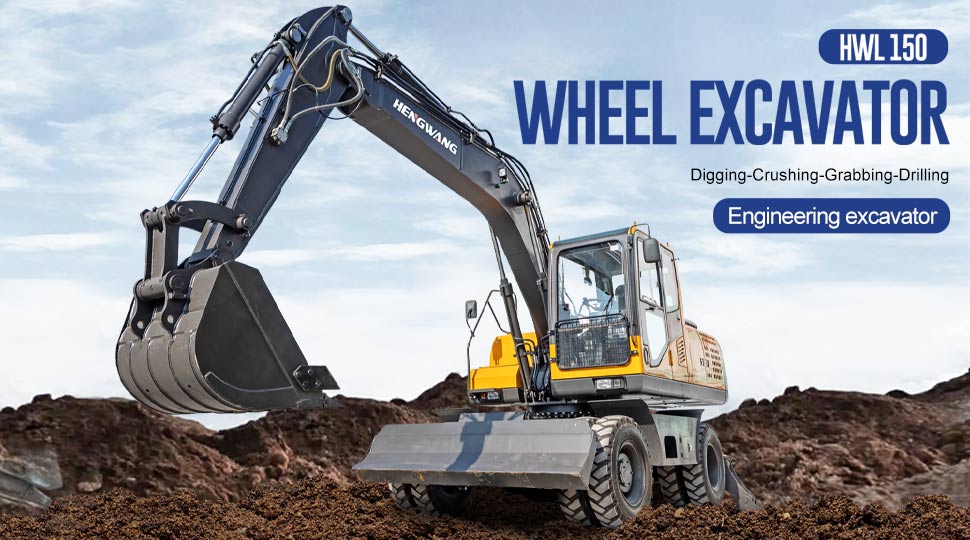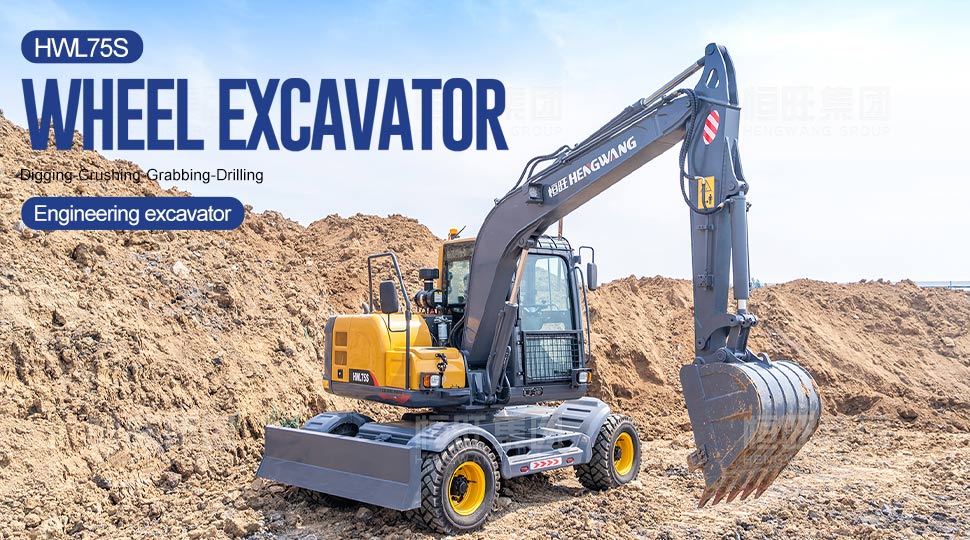In Europe, the selection of construction equipment is no longer just "performance-driven" — the "zero-emission order in urban construction zones" to be implemented by the EU in 2025 (non-electric construction machinery prohibited from entering), coupled with "carbon tax" policies already implemented in Germany, France and other countries (an additional 0.5 euros per liter tax on diesel power), is forcing construction companies to switch to Deep Digging Excavator. The transformation of a French municipal construction company is representative: after introducing Hengwang HWL150 and other Deep Digging Excavator in advance in 2023, it not only successfully entered the construction zone in central Paris but also saved 86,000 euros in annual carbon taxes. Such equipment that combines "ultra-deep digging capability" and "low-emission adaptability" is becoming a "must-have" for European construction sites.

I. Policy red lines: Why do European construction sites "only choose compliant ones"?
The EU's environmental policies are forming a "combination punch", directly rewriting the procurement logic of construction equipment:
lAccess threshold: From 2025, construction zones in 50 core cities such as Berlin (Germany) and Paris (France) will completely ban non-electric construction machinery from entering, with a maximum fine of 50,000 euros for violations. Although Hengwang Deep Digging Excavator are mainly fuel-powered models, they have become the preferred choice during the transition period due to their efficient energy consumption design (e.g., the fuel efficiency of the Cummins engine in HWL150 is 15% higher than similar models) and EU CE certification;
lCarbon tax pressure: Under the EU's "Carbon Border Adjustment Mechanism" (CBAM), traditional diesel wheeled excavators consume 8-10 liters per hour. Calculated at a carbon tax of 0.5 euros per liter, 2,000 working hours per year require 8,000-10,000 euros. A Dutch construction company calculated: after switching to Hengwang HWL180 Deep Digging Excavator, annual carbon tax expenditure was reduced by 3,000 euros due to fuel consumption dropping to 6-7 liters per hour;
lCertification barriers: The new EU CE certification requires construction machinery to pass "low noise + low emission" dual certification from 2024. All Hengwang Deep Digging Excavator meet the standards (e.g., HWL215 has noise ≤78 decibels, emissions meet EU Stage Ⅲ standards), with a 100% pass rate, while less than 30% of traditional models meet the requirements.
II. Hengwang Deep Digging Excavator's "European adaptability": Both depth and efficiency are online
European construction sites' demand for "depth" (municipal pipelines buried 3-5 meters deep, subway supporting projects over 6 meters) makes ordinary wheeled excavators incompetent. The core advantages of multiple Hengwang Deep Digging Excavator perfectly fit European scenarios:
1.Ultra-deep digging, meeting the rigid demand of municipal engineering
The maximum digging depth of HWL215 Deep Digging Excavator reaches 6350mm (6.35 meters), with a standard reinforced double-cylinder boom (yield strength ≥800MPa). In the Hamburg subway supporting project in Germany, it easily completed the laying of 5-meter-deep underground pipelines, with efficiency 12% higher than local brands. The maximum digging depth of HWL180 is 5525mm (5.525 meters), and its hydraulic system uses Kawasaki pumps, with depth error controlled within ±5cm, meeting the precision requirements of EU municipal engineering.
2.High efficiency and low consumption, adapting to carbon tax policies
In response to European carbon tax pressure, Hengwang Deep Digging Excavator have more advantages in energy consumption design: HWL150 is equipped with a Cummins engine (power 93kW), with fuel consumption of only 6.5 liters per hour, 2 liters lower than a mainstream European brand; its electronically controlled load-sensing variable piston pump reduces hydraulic loss. In the Lyon sewage pipeline project in France, 15 liters of fuel can be saved for 10 hours of daily operation.

3.Flexible and maneuverable, adapting to narrow urban spaces
Construction passages in old European urban areas are narrow (often ≤3 meters), highlighting the flexibility of Hengwang Deep Digging Excavator: The minimum tail swing radius of HWL90 is only 1980mm, allowing a single U-turn in a 2.5-meter-wide passage; HWL75S has a total length of 5898mm, suitable for small scenarios such as orchard ditch digging and community pipeline laying. In the renovation of the old urban area of Amsterdam, the Netherlands, there was no collision with buildings.
III. Case evidence: How Deep Digging Excavator help European companies "save profits"
The equipment replacement data of a German municipal engineering company in 2023 intuitively reflects the transformation value. Traditional wheeled excavators need to pay 9,200 euros in carbon tax annually, and will lose access to core urban construction zones from 2025; the introduced Hengwang HWL150 Deep Digging Excavator not only reduced carbon tax expenditure to 6,500 euros but also could legally enter all construction zones. In terms of operation efficiency, traditional wheeled excavators have an efficiency of 80 cubic meters per hour at a depth of 5 meters, while HWL150 can reach 88 cubic meters per hour. In terms of maintenance costs, diesel wheeled excavators cost 4,500 euros annually, while Hengwang only needs 3,200 euros due to more reliable hydraulic systems (Kawasaki pumps + Parker valves).
"The most surprising thing is the reduction in overall costs," said the company's person in charge. "In addition to saving carbon taxes, reduced fuel consumption allowed 3 devices to save 120,000 euros a year, enough to cover 60% of the equipment price difference."
IV. European policy-adapted model list: How to choose Deep Digging Excavator?
Targeting engineering needs in different European countries, Hengwang has launched 3 core models:
lHWL150: Maximum digging depth 5050mm, adapted to municipal pipeline projects in Germany and the Netherlands. Its Cummins engine meets EU Stage Ⅲ standards and supports 220V/380V auxiliary power;
lHWL180: Maximum digging depth 5525mm, equipped with a CE-certified intelligent monitoring system (real-time display of carbon emission data), suitable for subway supporting projects in France and Spain;
lHWL215: Maximum digging depth 6350mm, equipped with low-temperature start technology (normal operation at -15℃), adapted to construction in frozen soil areas in Nordic Sweden and Norway. Its bucket capacity of 1m³ meets the needs of large-scale projects.
Get for free: Interpretation of wheeled excavator policies in European countries
Want to know the details of Germany's carbon tax, France's urban construction zone access standards, or which Deep Digging Excavator is suitable for your project? Fill in your information to get for free:
lLocal latest construction machinery policy manual (including fine standards and subsidy policies);
lCE certification report of Hengwang Deep Digging Excavator and information on European local service outlets;
lExclusive model recommendations (customized according to project depth and operation duration).
Under the EU's "hard environmental constraints", choosing Hengwang Deep Digging Excavator is no longer a "choice" but a "survival issue" — it can not only help you avoid policy risks but also continuously save money on fuel consumption, maintenance, and carbon taxes, making every digging a dual guarantee of "compliance + profit"
